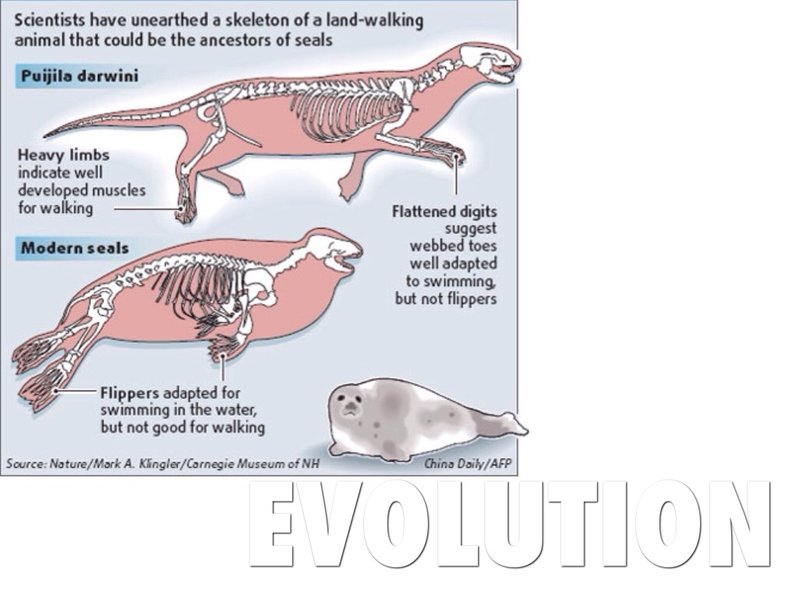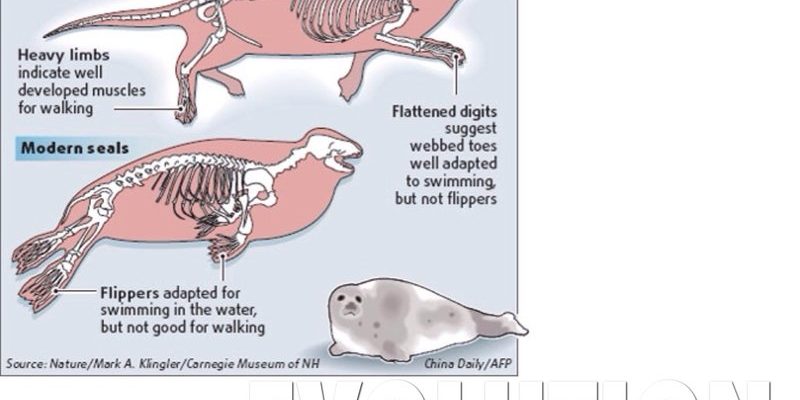
Imagine the walrus as a living paradox. On one hand, it’s a massive creature, weighing up to 2,000 pounds and measuring over 10 feet long. On the other hand, it has a surprisingly delicate role in its ecosystem. It’s like that friend who seems tough on the outside but is a total softy on the inside. This blending of might and grace comes from a long evolutionary path filled with unique adaptations. So, how did the walrus come to be? Let’s explore its journey from ancient ancestors to the modern-day walrus.
The Ancestry of the Walrus
The story of the walrus begins millions of years ago. If we trace back their lineage, walruses belong to the family Odobenidae, which means “tooth-walker” in Greek. This amusing name gives us a hint about their most distinctive feature—those impressive tusks! But before they became the iconic marine mammals we know today, walruses had a different setup altogether.
Early relatives of the walrus were more similar to land-dwelling creatures than the ones we see swimming in Arctic waters. These initial ancestors were shaped by their environments, adapting to life near water while still having features suitable for life on land. Over time, they began to evolve, developing flippers for better movement in the sea and a blubber layer for insulation against cold temperatures.
As these creatures continued to evolve, their need for survival in harsh Arctic conditions played a crucial role in shaping their physical features. Think about it—having a thick layer of blubber not only helps keep them warm but also provides buoyancy while swimming. This adaptation is a prime example of how the walrus has changed to thrive in its specific niche.
Physical Adaptations Through Time
Once we look at the adaptations of the walrus, it’s easy to see how evolution has sculpted them into the creatures they are today. One of the most striking features is, of course, those tusks. These elongated canine teeth serve multiple purposes. From intimidating potential predators to helping them haul themselves out of the icy waters, tusks are more than just a show of strength.
Moreover, the walrus’s skin has also adapted impressively. With thick, wrinkly skin and a layer of blubber, they are well-equipped to handle the freezing temperatures of their Arctic habitats. This skin also plays a role in protection against the sun when they bask on ice, much like how we apply sunscreen to shield against harmful rays. It’s intriguing how these adaptations have allowed walruses to thrive in such a frigid environment.
Another fascinating aspect is their whiskers, called vibrissae. These sensitive whiskers help walruses detect prey on the ocean floor. Imagine trying to find food in a dark, murky environment; those whiskers are like high-tech sensors guiding them toward their next meal. Isn’t it amazing how evolution has fine-tuned their senses?
The Role of Walruses in Their Ecosystem
Walruses might seem like solitary creatures, but they play a vital role in their ecosystem. They are often seen basking in large groups on ice floes, which can be quite a sight! This social behavior isn’t just for fun; it serves important functions for their survival and the health of their environment.
By foraging for clams and other mollusks along the ocean floor, walruses are key players in the marine food web. They help regulate the populations of these creatures, ensuring a balance within their habitat. Picture a massive walrus diving down, using its whiskers to root out clams—each meal helps maintain the ecosystem’s health.
The materials they leave behind also contribute to nutrient cycling in the ocean. When walruses consume and then excrete their food, they return essential nutrients back to the water, promoting the growth of phytoplankton and other marine life. It’s like recycling at its finest, all thanks to these big fellows!
Challenges Faced by Walruses
Despite their impressive adaptations, walruses face significant challenges today, primarily due to climate change. As Arctic ice continues to shrink, their habitats are drastically changing. You might be wondering, what does this mean for the walrus population? Well, it can lead to overcrowding on the remaining ice and increased competition for food.
Additionally, warming waters and changing ecosystems disrupt the delicate balance in which walruses thrive. As their prey becomes less accessible, walruses must adapt once again to survive. This ongoing struggle highlights the harsh reality of climate change and the impact it has on wildlife.
Human activities also pose threats. From commercial hunting in the past to modern shipping routes and oil exploration, walruses are directly affected. Increased noise pollution and habitat disruptions make it challenging for them to thrive. It’s like having a loud party in your living room—suddenly, it’s hard to relax and enjoy your space.
The Cultural Significance of Walruses
Throughout history, walruses have held a special place in the cultures of Indigenous peoples in the Arctic. For these communities, walruses are not just animals; they represent a way of life. Hunting walruses has been a traditional practice for sustenance, clothing, and even tools. Let’s take a moment to appreciate how deeply intertwined these creatures are with the culture and survival of those living in the Arctic.
In art and storytelling, walruses symbolize strength and resilience. They’re often depicted in folklore, highlighting their majestic presence and the respect they command in their environment. This cultural significance reminds us of the bond between humans and nature—a connection that has existed for centuries.
As we consider the walrus’s place in both nature and human culture, it becomes clear that our actions can affect their survival. Respecting their habitats and learning about their importance can help ensure that future generations can continue to marvel at these magnificent creatures.
The evolutionary journey of the walrus is a captivating blend of survival, adaptation, and cultural significance. From their ancient ancestors to the majestic creatures we see today, walruses have evolved to thrive in one of the planet’s harshest environments. Yet, their journey continues as they face modern challenges posed by climate change and human activities.
By understanding these fascinating creatures and their role in the ecosystem, we can foster a sense of responsibility for their protection. Remember, the story of the walrus is not just a tale of biology; it’s a reminder of the interconnectedness of all life and the importance of preserving our natural world. So, the next time you see a walrus, think of the incredible journey it has traveled and the significant role it plays in the story of our planet.

